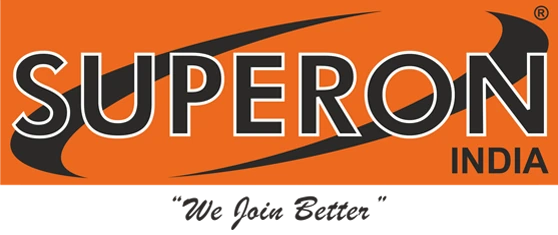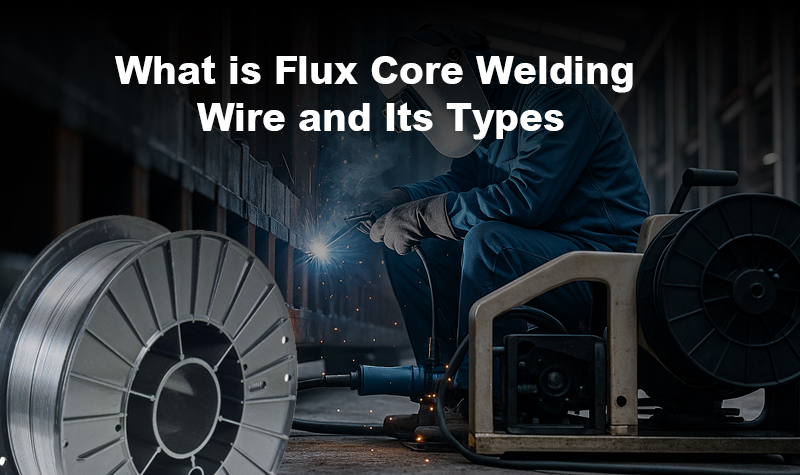Welding is an essential function for many industries, including construction, shipbuilding, automotive manufacturing, and heavy machinery. While different types of welding processes have emerged over time, one that is definitely an extremely effective welding process, as well as versatile, is flux core welding.
The greatness of this technique is based on the flux core welding wire — a special consumable which makes welding simpler, especially in the environments which are the most challenging. Regardless of whether you're an expert welder or someone who just wants to know how things are made and repaired, you should learn about the flux core welding wire. Throughout this article, we will examine what flux core welding wire is, as well as its strengths, its disadvantages, the most popular types, and the industries that use it the most.
What is Flux Core Welding Wire?
Using a special wire called flux core, the process is called Flux-Cored Arc Welding (FCAW). Unlike traditional MIG welding which uses solid wires, the use of flux core welding wire is unique because it has a hollow center filled with flux, which is a chemical mixture. In using flux core welding wire, when the wire and weld base heat up, the flux will reach a temperature that produces a shielding gas -- this shielding gas protects the weld pool from being altered by the atmosphere. The shielding gas offers protection from outside contaminants, such as oxygen or moisture from the air which could make the weld weak or contaminated.
Thanks to the shielding provided by the flux core wire, flux core welding wire is extremely effective at outdoor welding applications, especially when contracting windy conditions that may blow away any necessary external shielding gas.
FCAW is also called dual shield welding because it can use both the flux-produced gas and an external shielding gas for added protection whenever it is necessary. The technology was invented in the 1950s with an intention to improve on manual metal arc welding using more intricate processes that were too tedious and laborious. For now, flux holding is considered by many as one of the fastest ways and most productive among most familiar welding methods.
Why is flux cored welding wire so significant?
Flux core welding wire stands as one of the most important developments in welding because it offers immense versatility. Here's why:
- It can be used with many different welding processes, whether gas tungsten arc welding, shielded metal arc welding, or MIG.
- It's applicable to a large range of torches and welding machines.
- Compatible with TIG and MIG welders.
- It is the largest opening on the work of weld without changing in wires.
- It's more forgiving than other wires when it comes to small mistakes during welding.
- Using flux core wire is easier, safer, and more effective for any beginner and experienced welder.
How Flux Core Welding Works?
Here is how it process;
- The welding machine is continuously feeding the flux core wire to the site of welding.
- The flux melts in the wire and emits gases that protect the weld pool.
- This protects the area from exposure to air or dust, and interference from external "contaminants."
- The result is a strong, durable weld, even when things aren't ideal.
- The shielding effect from the flux is what allows flux core welding to function outdoors and in less than stellar environments.
Benefits of Using Flux Core Welding Wire
Flux core welding comes with lots of benefits, and the many reasons it is suitable for most types of jobs include:
- Well Suited for Outdoor Welding: Since the wire produces its own shielding gas, effects from wind and weather are negligible. Welders can engage in outside work without anxiously watching for the escape of their shielding gas because of winds.
- Greater Speed of Welding: In general, flux core welding features much higher deposition rates than other procedures, such as MIG welding, which, in effect, creates a faster laying of the weld metal and increases productivity.
- Top Quality Welds: Welds made from flux core wires are highly durable and are thus suitable for heavy-duty works that include construction, shipbuilding, and machinery repair.
- Effective Welding over Dirty or Rusty Surfaces: Unlike other welding methods, which insist on clean surfaces, flux core welding has good welding capability over dirty, painted, or rusty metal.
- Supplies Cost Lower on the Equipment: While employing the self-shielding flux core wire, you do not need an external gas cylinder, which in itself is a saving on setting up and usage costs.
- Flexible Position Welding: Considering that flux core welding is possible even in vertical and overhead positions, the method seems to lose some of its relevance concerning other welding methods.
Disadvantages of Using Flux Core Welding Wire
There are various pitfalls of using flux core welding wire. Some of them are:
- Smoke and Spatter: The generation of smoke during flux core welding creates visibility problems. Evacuate the fumes properly and wear safety equipment.
- Slag Removal: After welding, it will be necessary to chip off the slag-a layer of waste material formed on top of the weld. It adds another step to the process.
- Heat Control Difficulties: It is sometimes very hard for a beginner to control the heat; too much heat will warp or burn through thin metal.
- Possibility of Corrosion: If the flux is not cleaned, it will be able to cause corrosion over time, weakening the weld.
- A Messy Working Environment: Smoke, slag, and spatter together make your shop dirty, and you need to clean it regularly to maintain safety and quality.
Different Types of Flux Core Welding Wire
Not every flux core welding wire is the same. Each type has its designated purpose for different jobs. Here are the most commonly used types:
- Ferric (Fe) Core Wire:
- A mixture made up primarily from iron and copper.
- It is strong and can withstand high temperatures.
- Suitable for thick and heavy metal sheets as well as heavy fabrication.
- Commonly used in industries where durable and heavy structures are constructed.
- Argon (Ar) Core Wire:
- It is pure argon gas.
- Best suited to welding delicate materials where there is no risk of oxidation.
- It does not produce too much spark, hence safer in the presence of sensitive equipment.
- Copper (Cu) Core Wire:
- Has a higher copper content than ferric. It's very heat resistant and is capable of welding thinner sheets of metal.
- Functions better on metals that are more prone to corrosion by nature as copper has a natural resistance to corrosion.
- No matter what type of wire, it's best suited for a specific application depending on the substance being welded and the environment in which it operates.
Uses of Flux Core Welding Wire
Because flux core welding wire is reliable and versatile, it is found in a variety of applications and industries. Let’s look at those in more detail:
Heavy Manufacturing: In large projects like bridges, buildings, and heavy machinery flux core welding is used to create strong welds quickly. The heat inputs and deposition rates accommodate large sections of thick material very well.
Ship Building: Ship building requires tough welds that will endure highly corrosive marine environments. A large proportion of ship construction and repair uses flux core welding.
Construction: Regardless of whether constructing steel beams and columns or making infrastructure improvements such as roadways or tunnels, construction companies rely on FCAW for speed and reliability.
Auto Body Repair: Auto body shops use FCAW to repair and replace used parts, as well as frames and body panels. Because of rust and paint, FCAW is an effective way to repair damaged auto parts.
Pipeline Welding: Whether directing oil, gas, or water, pipelines need to be leak-proof. FCAW can be utilized while constructing pipelines and is effective when maintaining pipelines due to being able to make robust, pressure-tight joints.
Final Thoughts
Flux core welding wire has improved the welding world to say the least. It has strength, versatility, and convenience over traditional welding methods that is unsurpassed. From ship building, to automobile repairs, to welding heavy equipment, flux core welding wire proves its worth in a variety of industries and applications. Now that you know about what flux core welding is, the different types of flux core, and where it shines brightest, you will be able to make a better selection for your next welding project.

